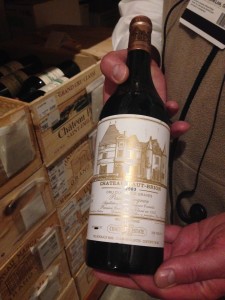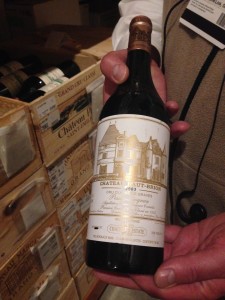
For college students of age, ordering a wine at a restaurant can be a daunting experience.
With thousands of vintages, or origins, and dozens of types, how can a wine novice choose the best wine? Whether it’s a business dinner or a casual hangout, choosing the right wine can significantly improve the occasion.
The Scoop got the opportunity to interview two sommeliers in the local area: Micah Pope, first-level sommelier with nine years of experience in the restaurant industry, and Darin Link, second-level certified sommelier at the Brown Derby International Wine Center. To achieve the second-level certification, sommeliers have to successfully identify wines in a blind taste test.


Our experts provided some key points for newbies to consider:
1. Certain wine varieties are more popular than others
For white wines, sweet, fizzy moscatos are always an option.
“For every bottle of wine sold, we sell about 1½ bottles of moscato,” says Brown Derby’s Link.
He suggests Marco Negri, which is available at the International Wine Center for $14 a bottle.
Chardonnay is also a good option in most situations. It’s a dry wine that goes well with creamy entreés like alfredo pasta. According to Link, chardonnays are universally popular among wine enthusiasts because of the perception that sweeter wines are lower quality.
As for red wines, both Pope and Link agree pinot noir is a popular option. “It’s a light, easy option for novices,” says Pope. Link suggests Pleasures, a Brown Derby exclusive wine, is a pinot noir for only $12 a bottle.
“There’s not a bridge from white to red wine, though,” says Pope. “They are separate entities.”

2. ‘New world’ vs. ‘old world’ wines
“New world” wines come from locations with more sunshine, like Argentina, New Zealand, South Africa and California. “Old world” wines come from colder climates like France, Germany, and Spain.
“Old world wines are made for food, while new world wines accommodate the American palate,” says Pope.
Americans tend to prefer new world varieties because they’re easier to drink. According to Link, they come from riper grapes that have more sugar and produce more alcohol.
3. Wines impact the taste of a meal
As a rule of thumb, these are some common wine and entreé pairings:
- For steak and foods heavier in fat, consider a pinot noir or other acidic wines, which tend to be old world. The acid combats the fattiness of the meat.
- For creamier pasta dishes, chardonnays are usually a good choice.
- Sauvignon blanc, a white wine, is an excellent palette cleanser. It goes with practically any meal.
4. The adjectives in the wine description are very literal
The descriptions are meant for those who are not well-versed in the wine world, not just sommeliers. They come from common experiences and tend to go by olfactory sensations, or smell. The general public is supposed to be able to relate. “Leather, garden hose, cat pee — it’s based off whatever you taste or smell,” says Pope.
At higher-end restaurants, there is also a process of ordering the wine. This process is important to note because many will find themselves in a business situation that includes dinner. Pope provides a step-by-step guide:
- As the person ordering, name the vintage desired (these are usually on the menu). For example: “A 2013 Honoro Vera Garnacha.”
- The server will bring it out to have you verify it. On occasion, servers can grab the wrong bottle, so it is necessary for you to make sure you are buying the right wine.
- The waiter will pour a small sample for you to try. This is to make sure the wine isn’t “corked,” or has gone bad. This is usually determined by the smell of the wine. “Corked red wine will usually smell like musty leather while white wine will have more of a vinegary scent,” says Pope.
- If it is bad, the server will provide another.
But there are some don’ts that should be avoided at all costs:
- Do not send it back because you don’t like it. This is not justifiable, especially for more expensive wines.
- Do not drink a significant amount and then send it back. At this point, it is obvious that the wine was enjoyable and should be paid for, whether it turned out to be corked or otherwise.
Overall, there is a lot to know about wine; this is just a start.
Both Pope and Link suggest simply going out and trying wines as opposed to reading about them. Although this can be expensive, it doesn’t have to be. Both agree that there are plenty of affordable, high-quality wines.